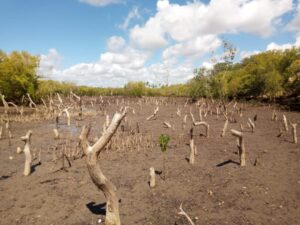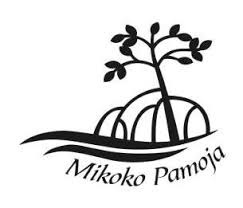by Ben Ayuko
contact info: benayuko@gmail.com
{image by GettyImages}
If you studied the Kenyan Syllabus, then you have probably heard of the Mangrove Forest and its breathing roots.
For those who don’t know, the Mangrove Forest is an interconnected system of trees found on Kenya’s coastline. They really like hot temperatures and swampy areas which is why they can only be found sea-level.

{image by sciencedirect.com}
Now, it might be a swampy, marshy wetland of a forest. But it’s still a Forest. Well, unlike many forests, it has breathing roots. But similar to any forest, it has all sorts of plants that can be found there. For instance, different species of mangrove has tannin (chemical substance) which can have numerous healing abilities. The Mangrove is also home to plenty of different fish and crabs and other animals that can be a good source of food to the communities that live near it. With its bulging roots it also provides protection from incoming tides and erosion for settling communities near the area.
Now, I know what you’re thinking. “That’s nice and all about the Mangrove, but why are you telling me about it?”
Well, first of all, that’s rude.
Second of all, did you know mangrove forests have breathing roots?
And thirdly, I’m telling you this because the Gordon and Betty Moore Foundation, via Future Earth, has just awarded a year-long grant worth Kshs. 6.5 million to Kenyan researchers in the Kenya Marine and Fisheries Research Institute (KMFRI). Their main aim is to be map out mangrove resources and get finer details of their condition in real time. This will enable them to better understand how and when to best take full advantage of them. Being a forest, of course, mangrove is also a decent source of fuel and wood. Predictably, we have overdone it.
Kenya’s mangrove forests had succumbed to logging and deforestation in the 1990s and early 2000s when approximately 450 hectares of mangroves and their breathing roots disappeared every year.

{image by: Nevil Agesa}
Luckily, one of the most famous projects in the world concerning mangrove restoration is a project in a small village in South Coast Kenya bordering the Indian Ocean with a mangrove forest.

The carbon offset project Mikoko Pamoja (Mangroves Together), formed in 2013, is the first of its kind in the world to successfully trade mangrove carbon credits.
Dr. James Kairo, the chief scientist at the KMFRI who will be spearheading the research, has previously stated how little is known about the extent of the benefits one could accrue from the mangrove, aside from helping clean up Kenya’s carbon footprint. “We have been doing mangrove restoration and mapping, but now we are taking it further,” he said. “We want to use machine learning to map mangrove conditions, their status and how they are growing.”
He will be joined by 2 students: Gilbert Kosgei– studying Hydrology at Maseno University- and Mary Kisilu– studying Environmental Science at Chuka University.
If everything goes according to plan, this arrangement could breathe new life into Kenya’s agricultural sector. But first, we need to learn how to breathe from our roots.

